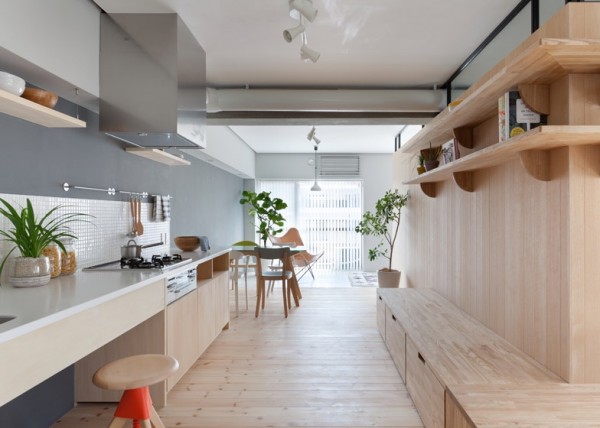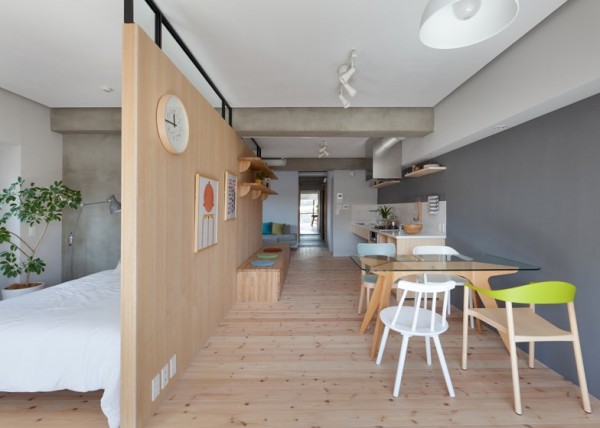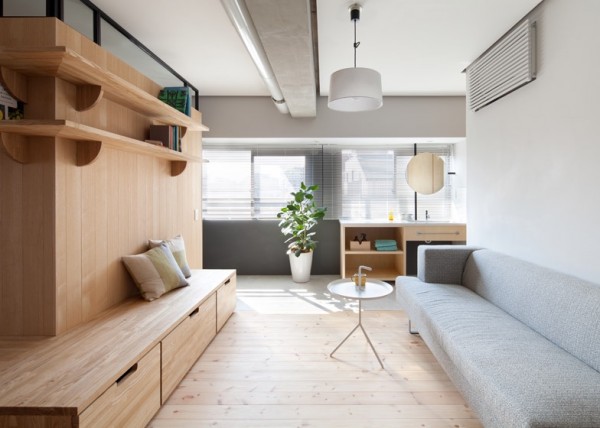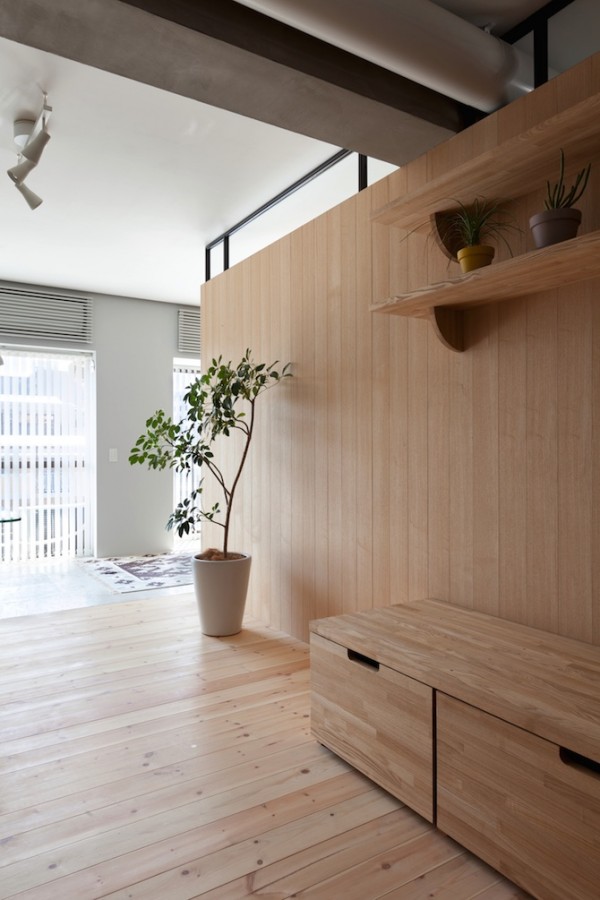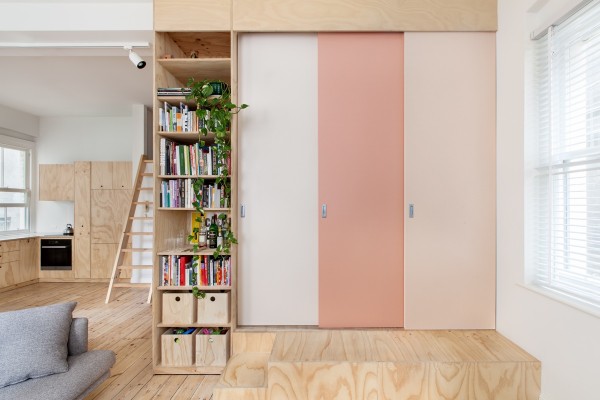As we have explored before, the Japanese style interior design aesthetic is highly tied to the idea of minimalism and negative space. In these two small apartments, you will see that there is truly nothing there that does not have a purpose. The spaces never feel cluttered or cramped, no matter what the actual area measurements. Instead, air and energy can easily flow from room to room in a relaxing and comforting way. Natural wood is another common element in Japanese design, and both of these spaces use it to great effect. Combined with swaths of sunlight and warm, light colors, even a small space can feel open as well as orderly when utilizing this style.
The first apartment is a renovation, done by the team at Sinato Architects. The house is known as Fujigaoka M and is more than two decades old. The purpose of the renovation was to create a space that was both more modern and more comfortable for the married couple who was to live there.
The architects sought to make the house more open and give it the connected feeling that comes with living as a couple.
None of the rooms in the home are closed off by walls and doors. Instead, half walls create some division and necessary privacy while sunlight from two sides of the home is allowed to flood in.
Of course, the use of sturdy natural wood, for the inner terrace as well as furnishings and flooring, is distinctly aligned with the Japanese aesthetic, giving the entire space a warm and cozy glow.
The central portion of the house, referred to as the “inner terrace” by the renovators, acts as a room separation but does not close anything off. Instead, it offers space for storage as well as display walls for personal photos, art, and books. The central wall therefore becomes a personal element of the house that is easily updated for seasonal changes or the occasional redecoration.
The second apartment is also a renovation, this time of a 75 square meter (800 square foot) home in Western Australia. The renovation was undertaken by Clare Cousins Architects and was necessary to make a warm and open home for a young family who was expecting their first child.
With such a small space for two adults and soon a child, an effort was made to minimize the sleeping area while maximizing the living space. This meant that every element had to be truly necessary, in the Japanese style, and when possible each space had to have multiple functions.
This was partially accomplished through the use of sleeping cubbies, that are no larger than a mattress. These areas can be closed off at night for privacy, or during the day to hide the bedroom away.
A young family of course will also want to be able to entertain on occasion and perhaps have overnight guests. The lofted area of the apartment accomplishes that goal with a spare guest bed as well as access area to hidden storage compartments. The lofted storage is actually home to more furniture, made from plywood, that folds flat to save space.
Moveable partitions throughout the home give residents the option to change the layout as they see fit, from day to day.
A simple but chic bathroom uses clean white tiles and gold plated fixtures for a modern and minimal – if not traditionally Japanese – look.
Fan of the Japanese style? Do check out these then.










